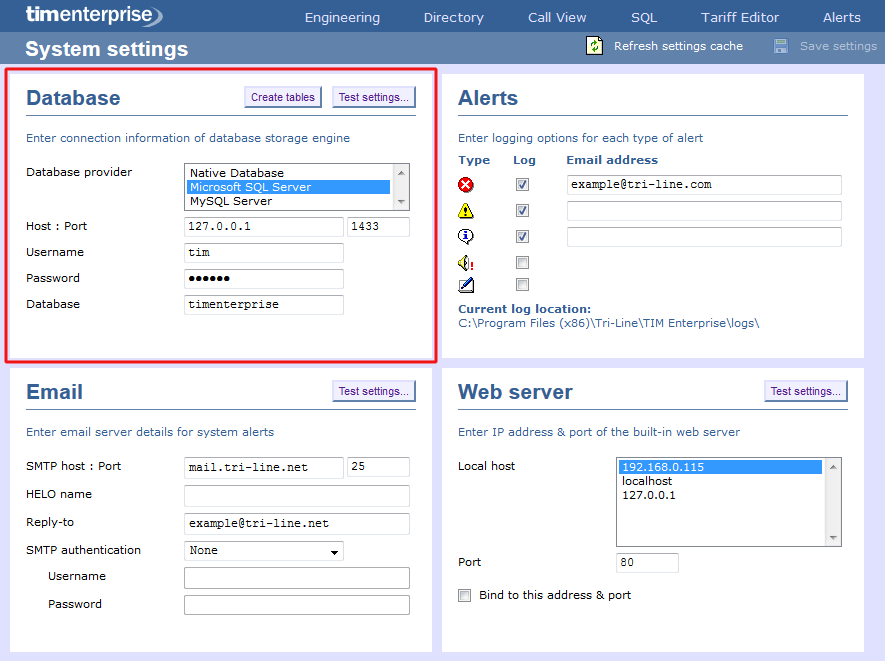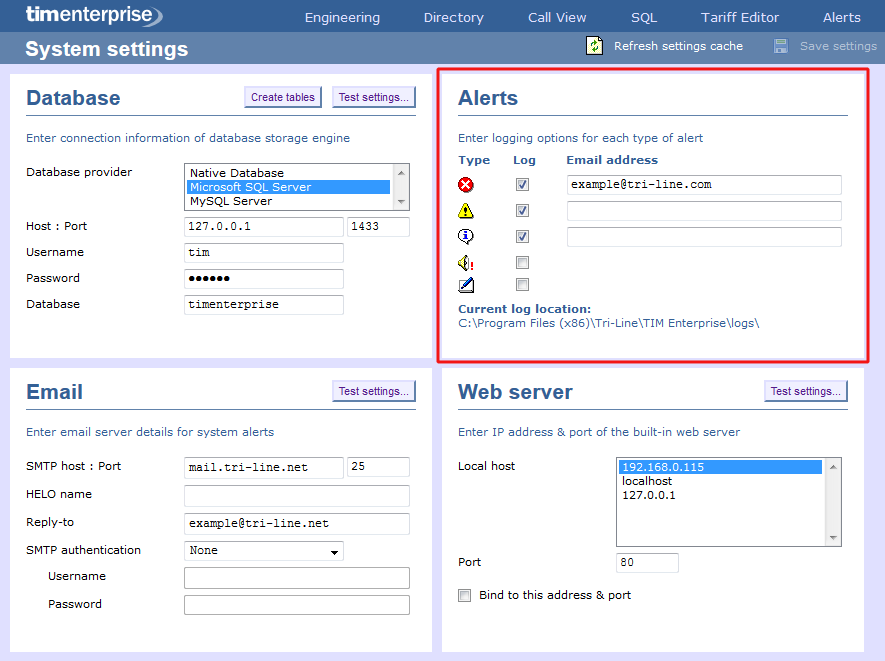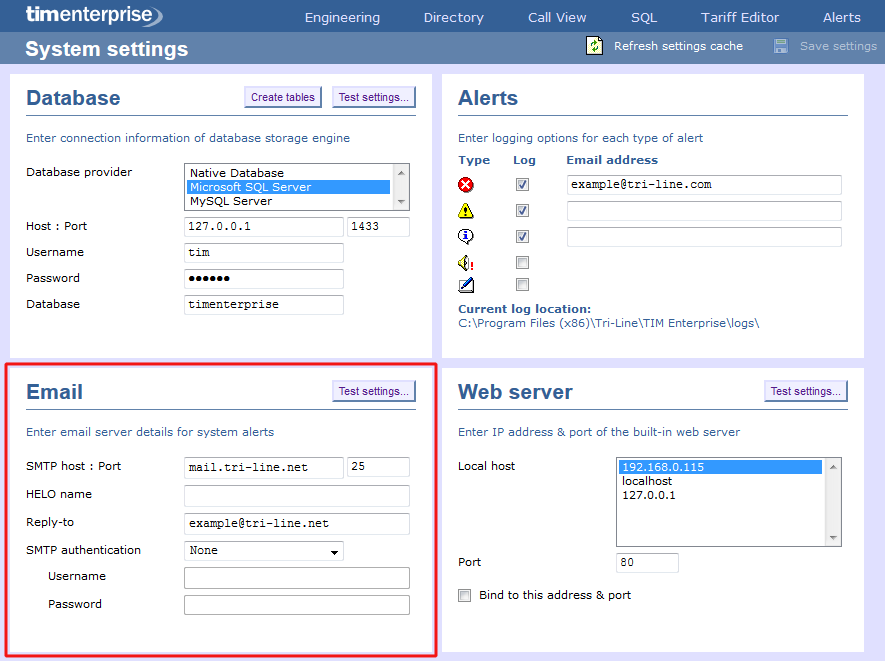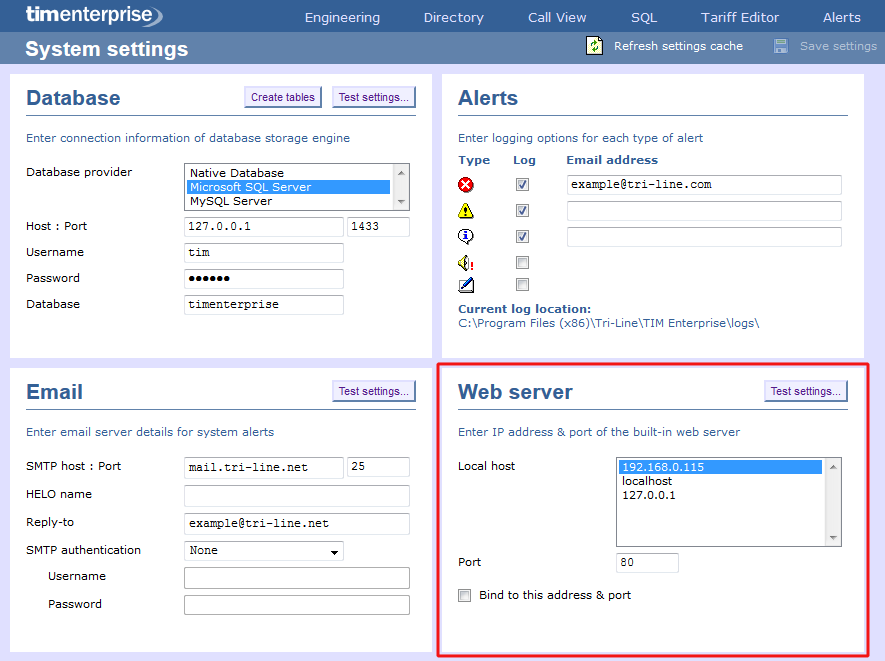System settings
Database
The Database section allows you enter the connection information of your database storage engine.

| Field | Description |
|---|---|
| Database provider | Select the database you are trying to connect to. Be default, TIM Enterprise is connected to a Native database |
| Host: Post | Enter the Host name or IP address of the database and the relevant port number |
| Username | Enter the username required to log in to the database |
| Password | Enter the password required to log in to the database |
| Database | Enter the name of the database |
Alerts
TIM Enterprise can be configured to raise an alert when particular events occur whilst the system is running. The alerts can be saved to a log file on a disk or sent as an email notification.

| Alert | Description |
|---|---|
 Critical Critical | A critical alert notifies you of any events that are detrimental to the system, e.g. database failure |
 Warning Warning | A warning alert notifies you of any non-critical events that have occurred on the system, e.g. you have exceeded your license limit |
 Information Information | An information alert notifies you of any system events that have occurred on the system, e.g. if the application service has been restarted |
 Voice audit Voice audit | An alert that notifies you of progress during call recording operations |
 Audit Audit | Provides very detailed information about ongoing system events, primarily used for fault-finding |
This section allows you to configure the details of your mail server in order to enable TIM Enterprise to send out scheduled reports, call alarms, missed call notifications or system alerts.

| Field name | Description |
|---|---|
| SMTP host: Port | The IP address or host name of your company's mail server and the port number, which by default is 25 |
| HELO name | The greeting name required by your mail server to identify the computer that is sending the email. In most cases, this is the network name of the server running TIM Enterprise |
| Reply-to address | The email address you want to use to send a test email, in order to verify your email settings |
| SMTP authentication | The authentication method used by your mail server. Choose None if the authentication is automatic or not used |
| Username | Enter the username of the SMTP authentication |
| Password | Enter the password of the SMTP authentication |
Web server
TIM Enterprise has its own built-in web server and it can be accessed from any PC on your network without the need of any additional software. To configure, choose the IP address and port number that you want the web service to listen on.

Remote access & diagnostics
This feature is reserved for future use.